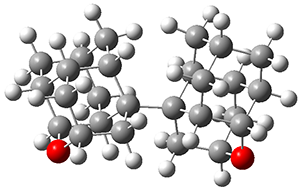Highlighted by Jan Jensen


The absolute error of the optical band gap computed with the CC-PVDZ basis set
The difference between the lowest triplet and singlet energy (ET) can be calculated both by UDFT and TDDFT but give different results because we don't know the exact density functional. So the authors suggest that functional can be improved by minimising this difference, i.e. without comparison to experimental data.
Indeed, such a triplet tuned (TT) functional "provide more accurate predictions for key observables in photochemical measurements, including but not limited to ET, optical band gaps (ES), singlet–triplet gaps (∆EST), and ionization potentials (I)" for a set of 100 organic molecules. Two parameters in the PBE exchange functional, the fraction of short-range HF exchange and the range-separation parameter, were adjusted.
One thing that is not clear to me is if the equivalence of UDFT and TDDFT is valid only for the exact density. If so, this would only be valid in the complete basis set limit. Either way, the results clearly improve using the CC-PVDZ basis set.

This work is licensed under a Creative Commons Attribution 4.0 International License.
One thing that is not clear to me is if the equivalence of UDFT and TDDFT is valid only for the exact density. If so, this would only be valid in the complete basis set limit. Either way, the results clearly improve using the CC-PVDZ basis set.

This work is licensed under a Creative Commons Attribution 4.0 International License.



